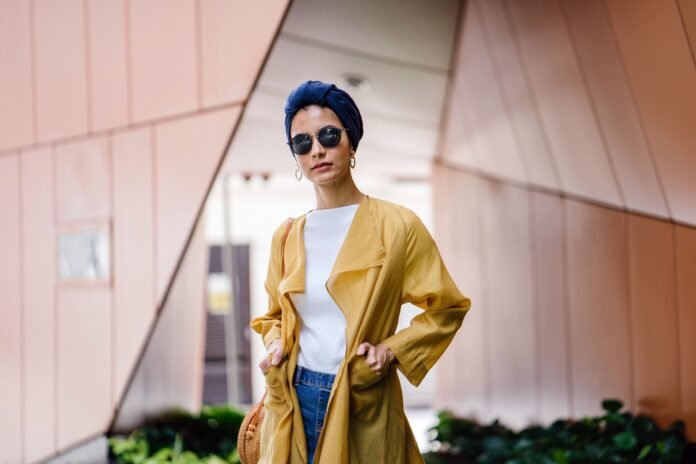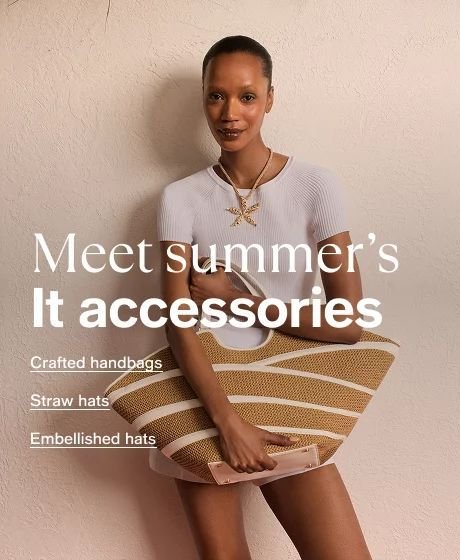Fashion has been long been hailed as a space to celebrate unique personal styles, allowing individuals to stand out from the crowd and express themselves. But in recent years, fashion has taken a step forward and shifted its focus to celebrate diversity from all walks of life. Fashion runways have become an inclusive space for people to display their individuality through clothes — and the designers are embracing it with open arms. Read on to learn more about how inclusive runways are making a positive effect on the fashion industry.
1. Celebrating the Beauty of Inclusivity
Many of us have been raised to value diversity and inclusivity, and the beauty of seeing the world through this lens is hard to put into words. From classrooms to boardrooms, this appreciation of different backgrounds starts with a sense of respect and the sincere desire to learn together.
Every day, acts of kindness, service, and self-respect remind us of the grand beauty of being inclusive. We can take heart in the fact that each of us has access to this kindness through our community, at work or at school.
The Joys of Inclusivity
- Inclusivity is the foundation of community. By creating a space where people of all backgrounds are welcomed, we learn to recognize our shared humanity and understand each other better.
- Inclusivity fosters personal growth. We are no longer afraid to try new things; instead, we embrace them in an effort to understand from different perspectives.
- Inclusivity creates a safe environment. We are given the opportunity to be our true selves without judgment or fear of repercussions.
Inclusivity contributes to a vibrant, resilient society and gives us the opportunity to discover the beauty of diversity. We must maintain this respect for our differences and recognize the importance of embracing everyone, regardless of race, gender, religion, or any other difference. When we celebrate inclusivity, we celebrate our world in all its glorious diversity.
Inclusivity also gifts us with enormous potential. By connecting us to the world’s brightest minds, it helps us to expand our knowledge and skills and realize our common goals.
2. Diversity Reigns on the Catwalk
Fashion models and catwalk shows have increasingly embraced diversity. The runway is no longer reserved for the tall, slender, and blonde crowd. The fashion world now reflects real people.
On the catwalk, you’ll now find models of all sizes, from petite to plus-size, and they’re praised and celebrated for their non-standard beauty. Models with deeper skin tones and a variety of ethnic backgrounds are proudly strutting down the runway, representing communities not traditionally seen in mainstream fashion.
A widening definition of beauty has been celebrated by fashion designers, who are now featuring garments designed for every body type. From custom denim jeans to feature-flattering cocktail dresses, clothing is being crafted for all shapes and sizes, allowing for a greater range of representation.
Making fashion shows look like the real world goes beyond sizes and skin tones. Models of all abilities have also been featured in several catwalks, from models in wheelchairs to those with hearing impairments and genetic disorders. All of these engaging stories of courage and unwillingness to back down has been captured on the catwalk.
You can now find the following attributed to catwalk shows:
- More body types- Petite, Plus-size, and everything in between
- An array of skin tones- Olive, mocha, caramel, deep chocolate
- A range of ethnic backgrounds- Asian, African, Indian, and more
- Fashion for every body- Designers designing clothing for various shapes and sizes
- Models of all abilities- Wheelchair users, hearing impaired, and more
The catwalk is no longer a place of rules and limitations; it now celebrates and honors diversity in all its forms, and we couldn’t be more excited.
3. Designers Embrace a Wide Range of Body Types
From the bright lights of runways to the glossy pages of print magazines, fashion has long been a reflection of society’s beauty standards. However, designers are now redefining those standards and embracing a range of body types—tall, short, and everything in between.
Size Inclusivity
Designers are increasingly pushing boundaries in terms of size inclusivity. They have embraced stylish and affordable pieces for everyone, no matter their shape or size. The fashion world is recognizing that real people come in all shapes and sizes, and are creating pieces with that in mind. Many big-name brands, such as Gucci and Calvin Klein, are breaking away from the traditional “sample size” of models and hiring all types of models for their campaigns.
Breaking Barriers
The fashion industry is slowly but surely breaking away from the unrealistic idea that all bodies should look the same. Designers are shifting their focus towards body positivity and celebrating diversity in all shapes and sizes. This is also being reflected on runways and in print editorials, which aim to eliminate traditional beauty standards with a broader representation of body types.
Unique Styles
Designers are working with a wide range of body types to create pieces that fit and flatter all figures. They are creating styles that are tailored specifically to the individual, allowing for a bespoke stylistic experience. By embracing all body types, designers are creating clothing that is unique to each customer, and thus, creating a more inclusive industry.
The Impact
Designers honoring all body types are creating a positive ripple effect in the fashion industry.
This will have a profound impact on how fashion is perceived and will likely lead to a change in attitudes towards beauty. This includes more people feeling comfortable in their own skin and ultimately, a unified message that everyone is beautiful in their own unique way.
4. Fashion Steps Out of Its Comfort Zone
As fashion takes strides to become a more diverse and inclusive industry, it is breaking away from its traditional niches. From the all-black-everything uniform of the fashion elite to the eclectic street style of Harajuku, fashion has been a vehicle to make sartorial statements for centuries. Now, fashion is delving into new trends that people didn’t know could be stylish. Here are four ways fashion is transitioning away from the same old same old:
- Athleisure 2.0: It’s no surprise that athleisure has become an ever-increasing trend, since comfortable loungewear leggings and sneakers gained popularity over the last decade. But now, gone are the days where athleisure is just for running errands – a sleek tracksuit paired with heels or a knitted dress and sneakers are having a moment.
- Menswear for Women: The iconic Coco Chanel quote “fashion is not something that exists in dresses only” has never been truer. Women are now reaching for menswear in their wardrobes, with the traditional ‘man’s coat’ and crisp linen shirt stealing the spotlight. Oversized trousers and structured blazers are becoming staples both in and out of the boardroom.
- Mismatching Prints: The saying ‘less is more’ has flown out the window. Now, fashion encourages layering 2-3 different prints for a fearless and visually stimulating look. Whether it’s clashing cheetah and polka dots, zebra and paisley, or floral and camo – it’s all allowed.
- The Office Embrace Cosy: In years gone by, suits and collared shirts were the only acceptable route for those heading to the office. However, rolling out of bed a few minutes before the workday begins is now achievable for city dwellers. If you’re working from home, why not pair a cotton jumpsuit with sneakers or stick to an oversized sweater and sweatpants?
Fashion doesn’t have to be something monotonous – the skirts today don’t have to be the same as yesterday. Step beyond your comfort zone and express yourself with a fearless fashion statement.
5. Reimagining the Runway with Inclusive Standards
The fashion industry has seen its share of glitz and glamour, from lavish fashion shows to exclusive designer labels—but the runway has long been dominated by a certain kind of beauty. But recently, designers and brands are reimagining the standards of the runway, making it more inclusive. Here are five ways fashion’s biggest names are tackling inclusivity.
- Leveraging Strengths: Many brands are going beyond typical beauty standards and looking to embrace different body types, shapes, skin colors, and genders on the runway. This movement is underscoring the unique strength of every model and diversifying the scope of beauty.
- Inclusive Design: Designers are integrating differently-abled models into their runway shows, wearing adaptive clothing that’s designed to accommodate a range of motion and disabilities. It’s an important step in celebrating fashion for all.
- Using Advocacy: Fashion brands are putting their resources into helping amplify the voices of people of color, celebrating unique cultures, and using their platforms to advocate for minority and diverse rights all around the globe.
- Reconsidering Labels: The industry is embracing terms like ‘Plus’ and ‘Non-Binary’ to reflect growing diversity in the fashion world. By utilizing labels that embrace different sizes, levels of ability, and gender fluidity, designers are normalizing inclusivity on the runway.
- Celebrating The Change: While the runways are welcoming inclusivity, many of the biggest design houses are embracing it with open arms. From front-row stars to beautiful lines of clothing, the fashion world is embracing all those different types of beauty, creating a more accessible—and powerful—runway for everyone.
By embracing inclusivity, the fashion industry is continuing to diversify the world’s perspective on beauty. By being open to different body shapes, skin colors, genders, and minority rights, the runway is becoming a home to many who can relate to those experiences. The future of the runway is full of beautiful, diverse stories that reflect a modern and inclusive world.
The models of today have now become trendsetters and agents of change. Inclusive fashion is proof that diversity should be embraced in all aspects of life. With more designers pushing boundaries in the fashion world, a greater appreciation for beauty and purpose in varied forms is finally being realized. In this way, there is hope for the development of a more genuine and understanding environment where all can be celebrated for their individual strengths.




